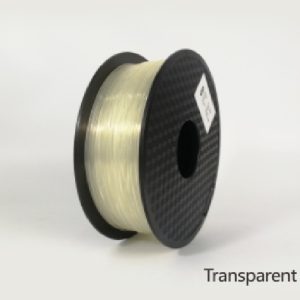3D Printing Filament
3D Printing Filament | Ultrananotech
Fused Deposition Modeling (FDM) and other similar 3D printing technologies rely on 3D printing filament for survival. This filament is the physical display of an idea, gradually transforming digital designs into tangible things with remarkable precision. It melts as well as solidifies as it goes through the printer's extruder, weaving intricate structures and turning imagination into tangible reality.
What Kinds of 3D Printer Filament Are There?
Plastic Filaments for Regular Usage:ABS (acrylonitrile butadiene styrene) and PLA (polylactic acid) are two popular 3D print filaments. PLA is known for its impact resistance, while ABS is tougher and lighter.
More thermoplastic filaments: Nylon (polyamide), PET (polyethylene terephthalate), PVA (polyvinyl alcohol), ASA (acrylonitrile styrene acrylate), and HIPS (high impact polystyrene) are instances of these. The properties of these filaments establish how they are utilized. Due to their solubility, HIPS and PVA are commonly used as support materials for dual-extrusion printers.
Filaments that are flexible:These are rubber and rigid plastic filaments. TPE (thermoplastic elastomer), TPU (thermoplastic polyurethane), and amphora filament are examples. TPE and TPU are both popular materials for flexible designs.
Exotic Filaments: These take a base material, such as PLA, and enhance it with special additives to perform extra functions. Sandstone, wood, silk, metal, and magnetic filaments are a few examples. The application of the various filaments will be based on the desired finish of the end product. For example, in silk filaments, a silk-like finish is desired.
The filament pertains to a variety of colors and materials that fit a wide range of applications. With the precision and reliability of ultrananotech.com's 3D printing filament, you can let loose your creativity and bring your designs to life, from prototypes to functional parts.
Shop other products, Bio products Graphene Products Silicon Dioxide Wafer GOLD
 +91-8800903073, 8452810712
+91-8800903073, 8452810712

